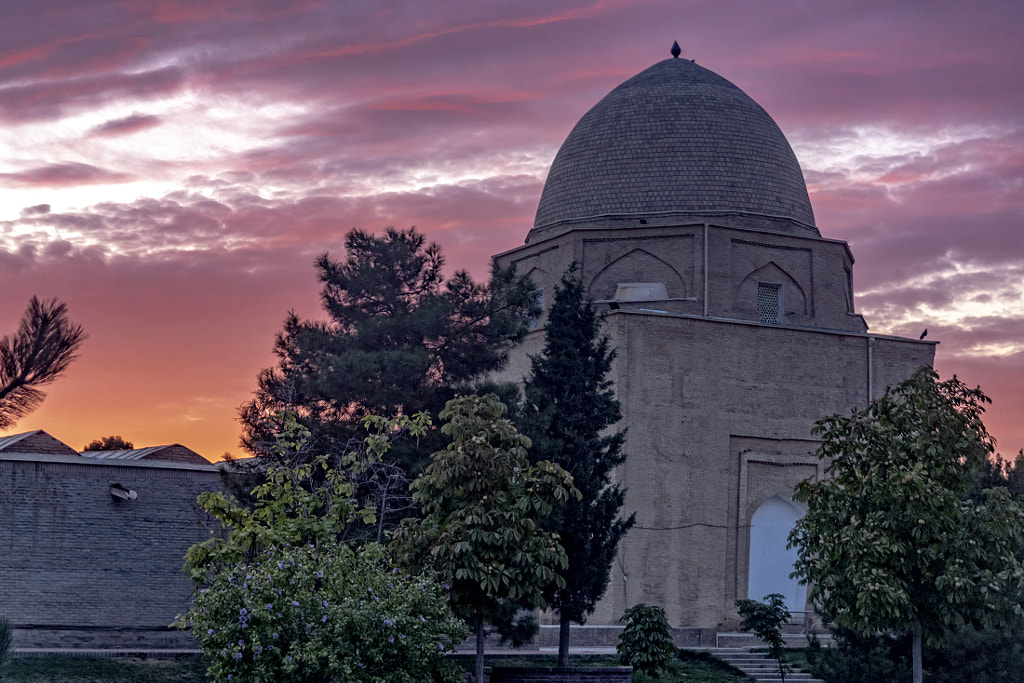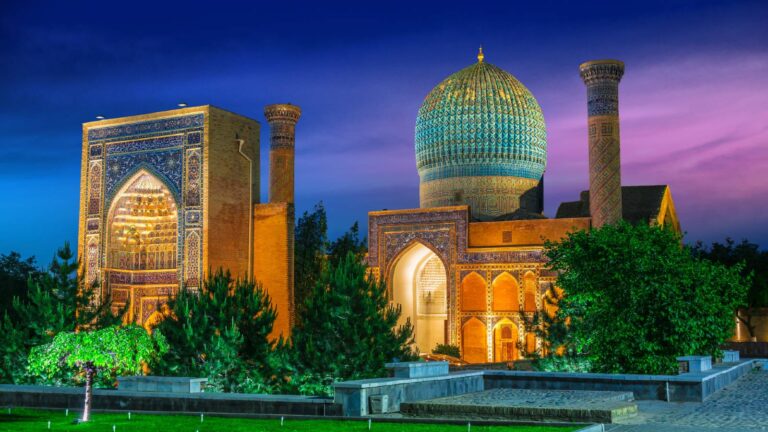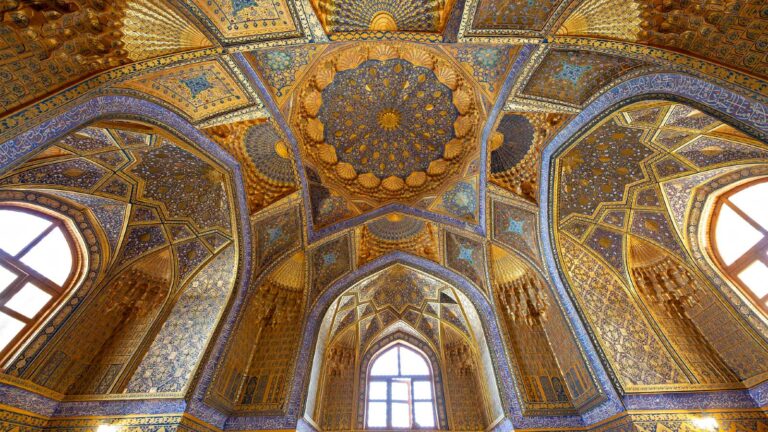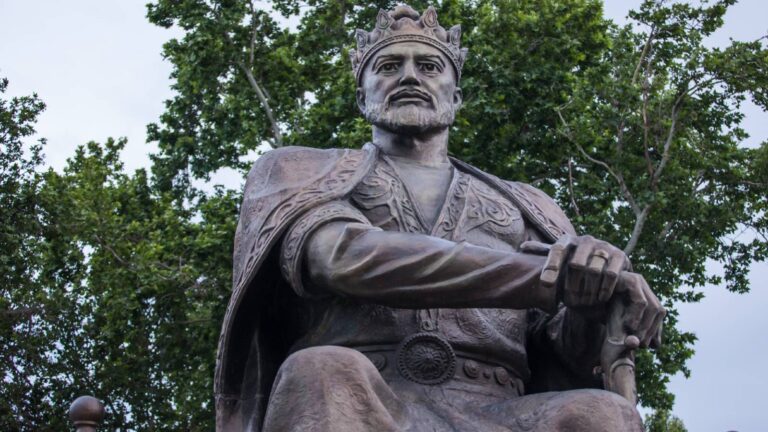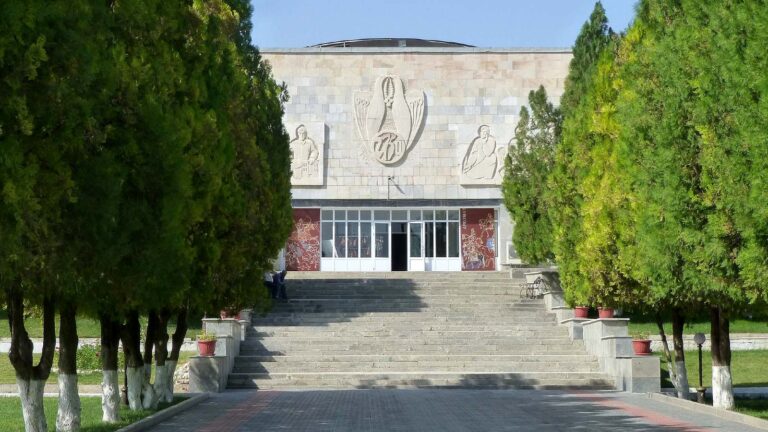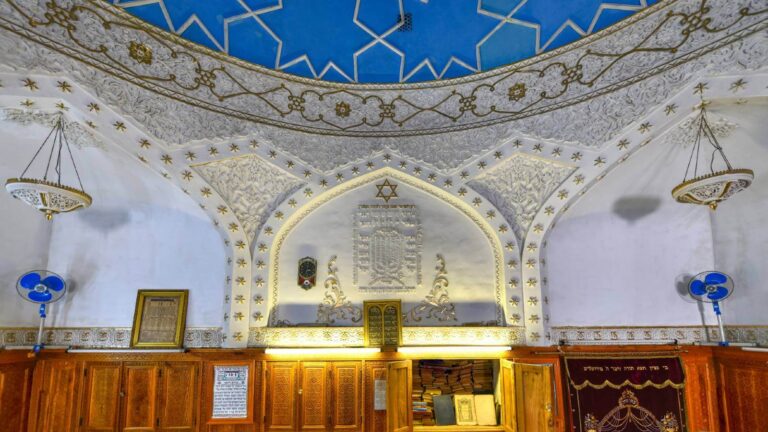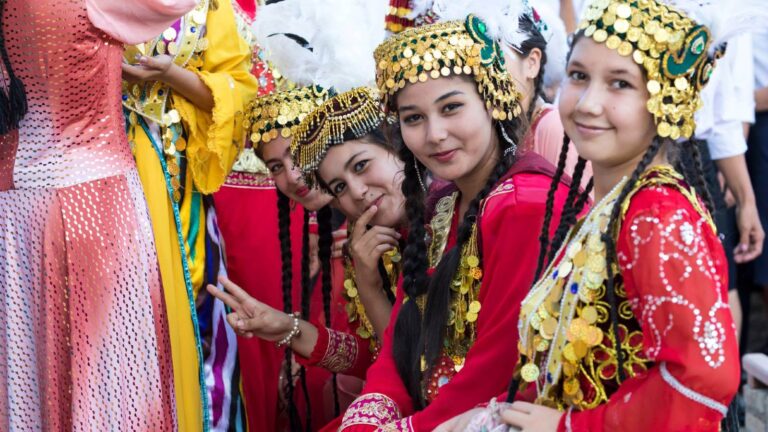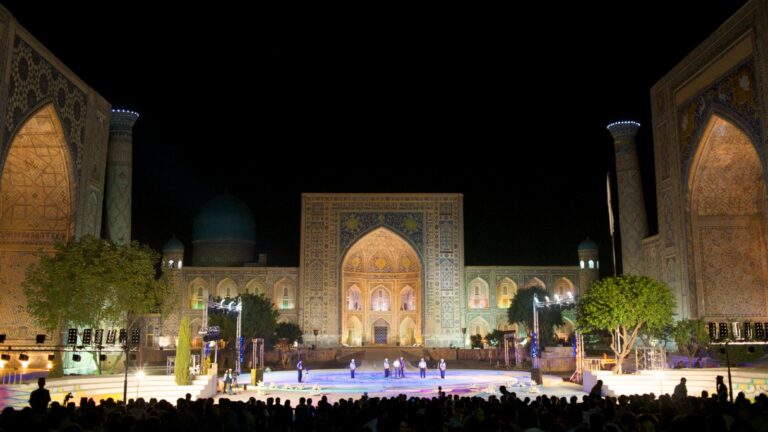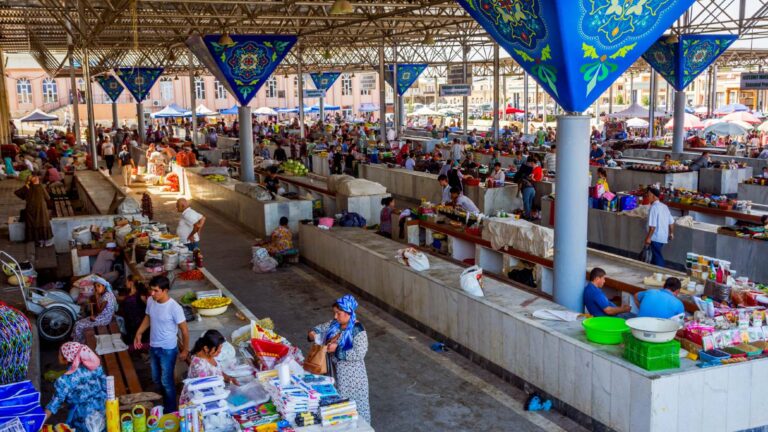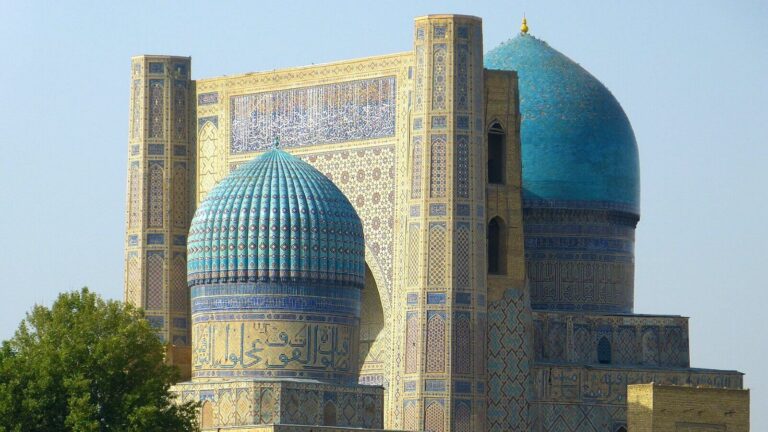Getting There
Don’t know how to get to the Rukhabad mausoleum in Samarkand, Uzbekistan? We will help you find the best way to get to the Rukhabad Mausoleum from the nearest public transport stop.
Looking for a stop or a station near the Mausoleum of Rukhabad? Check the list of the nearest stops to your destination: Rukhabad Mausoleum; Registan Street; Bustansaray Street. Rukhabad Mausoleum can be reached by bus or by minibus, These lines and routes have stops nearby: (Bus) 1, 3, 10, 13, 9, 19, 22, 27, 31 and other transports.
What to Expect
The memorial complex was different from the typical buildings during the reign of Amir Temur, namely, it did not have the usual entrance portal, the mausoleum was single-domed, and the decor itself was made in an ascetic spirit, without unnecessary decorations and luxury. This is probably because the Islamic preacher himself was part of the dervish community and led a modest, simple life full of pilgrimage processions and reverence for Islam.
The mausoleum can be entered from three sides: north, west and south. The interior decoration of the mazar is soothing with its simplicity: the walls are covered with alabaster plaster, and a strip of glazed tiles flows over a two-meter panel. The entrance to the burial room is blocked by a carved door of the XIX century. Once upon a time, a columned mosque stood near Rukhabad and there was a house, in the transparency of the waters of which the tomb was visible.
History
The Rukhabad Mausoleum was built by order of Amir Timur in 1380 over the grave of the Islamic religious figure Sheikh Burhaneddin Sagarji, originally from the town of Sagarj, which became famous for spreading Islam among the nomads of East Turkestan. The time of the burial itself is not known for sure. The Islamic theologian Abu Hafsa Najmetdin Umar in” Kandiya ” refers the burial of Sheikh Burhaneddin Sagarji to the X century.
According to other sources, the sheikh’s grave appeared in Samarkand in 1287[1]. However, most historians date the burial to the second half of the XIV century, relying on the testimony of the Arab historian and traveler Ibn Batutta, who visited India and China in the 40s of the XIV century and called Sagarji the head of the Muslim mission in Beijing. Burhaneddin Sagarji enjoyed great influence at the court of the Mongol Yuan dynasty that ruled in China and was even married to a”Chinese princess”. He died in China, having bequeathed to his son Abu Said to bury him in Samarkand.
Facilities Available
Hotels near the Rukhabad Mausoleum are popular and in demand among tourists. Cheap accommodation facilities are ready to offer comfortable accommodation for a holiday or business trip. It is worth noting that guests can also book a room with a view of a landmark or an architectural monument. Hotels such as Boutique Hotel Rabat, Hostel Registan, Orient Star Hotel, Hotel Samarkand, Hotel L’argamak, Hotel Sultan and others.

